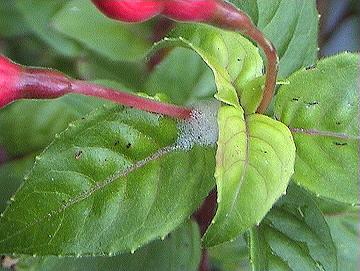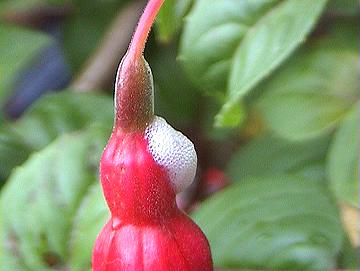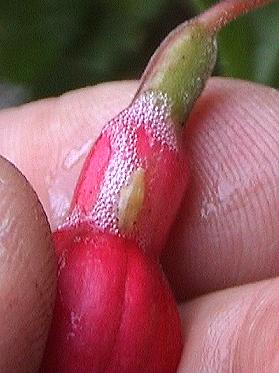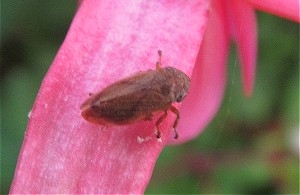



Schuimcicade - Philaenus spumarius (Cercopidae)
De schuimcicade (ook schuimbeestje of koekoeksspog genoemd) is een lastig insect, dat verscheidene planten aantast.Het volwassen diertje is een klein springertje dat plotseling van een plant spat als het opgeschrikt wordt - zoiets als een krekeltje maar compacter, een beetje hoekig-ovaal en ongeveer 0.5 cm lang, meestal lichtbruin, maar ook andere kleuren komen voor.


 Bestrijden gaat nog het beste door enige afschuw te overwinnen en de beestjes met de hand te lijf te gaan. Een greep met duim en vinger in het spuugkwakje, en een grasgroen of donkerrood beestje tracht zich langs
de plantenstengel uit de voeten te maken - even tussen duim en vinger zien te vangen en platknijpen. Dat scheelt weer een gekromde plantenscheut.
Bestrijden gaat nog het beste door enige afschuw te overwinnen en de beestjes met de hand te lijf te gaan. Een greep met duim en vinger in het spuugkwakje, en een grasgroen of donkerrood beestje tracht zich langs
de plantenstengel uit de voeten te maken - even tussen duim en vinger zien te vangen en platknijpen. Dat scheelt weer een gekromde plantenscheut.


